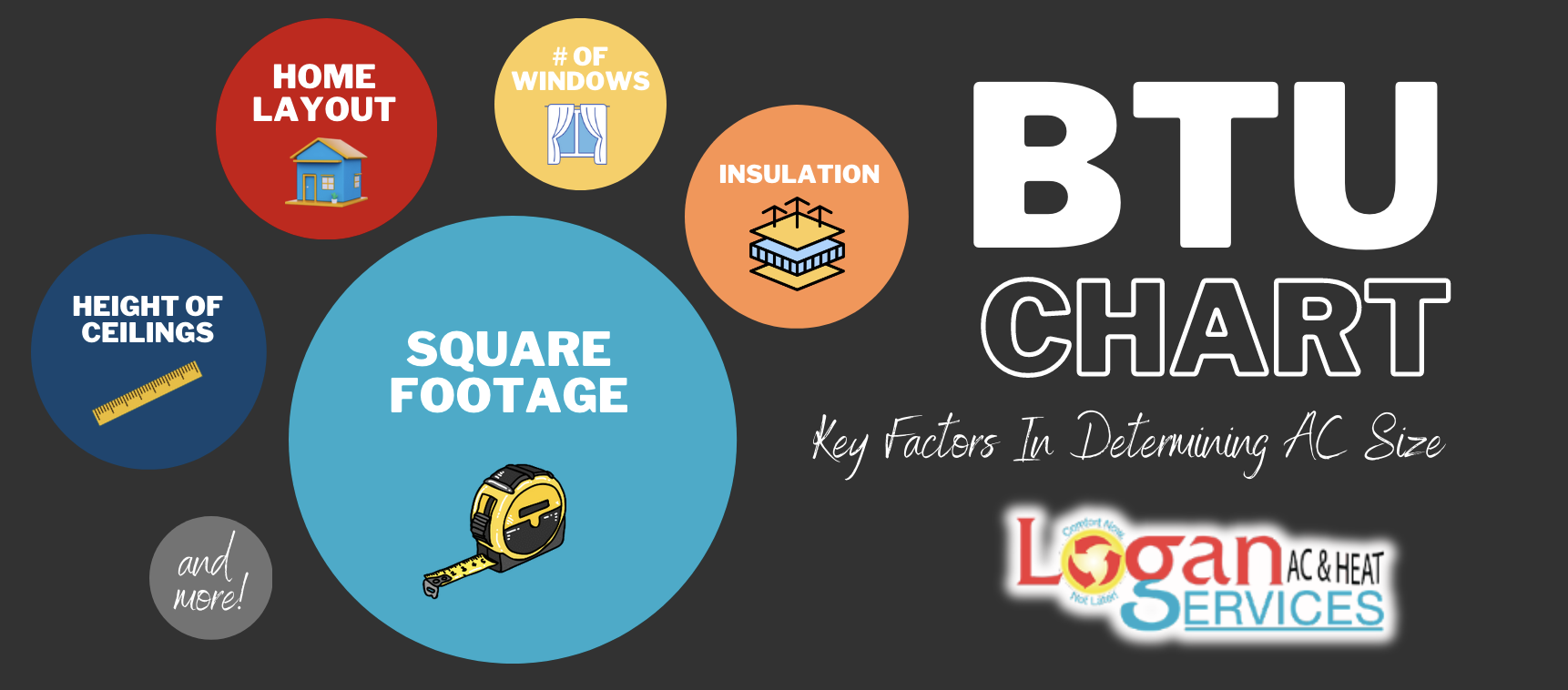In the world of air conditioning, the concept of tonnage plays a crucial role in determining the cooling capacity of your central air unit. But what exactly does it mean?
In this article, we will delve into understanding AC tonnage, exploring its definition, importance, and relation to cooling capacity. We will also discuss the key elements of the AC tonnage chart and how to interpret them.
Whether you need to select the central air unit or reevaluate your system, this comprehensive guide will help you understand AC tonnage and help you to find the perfect cooling solution for your needs, while still prioritizing energy efficiency and cost savings.
All About AC Tonnage and Choosing the Right AC Unit
Understanding the Basic Concept of AC Tonnage
A proper AC tonnage calculation is a crucial part of of your AC replacement project for selecting the most suitable central air system for your space. It efficiently determines the cooling capacity needed based on specific parameters.
Definition and Importance of Air Conditioner Tonnage
Calculating the right AC tonnage is your first step to selecting the ideal central air system for your home. It helps determine the cooling capacity needed by suggesting the correct tonnage, thereby assisting in deciding which central AC systems to choose. This crucial step helps to ensure you meet your cooling requirements without overspending on an oversized central air system.
AC Tonnage in Relation to Cooling Capacity
In the context of air conditioning, tonnage refers to the cooling capacity of an air conditioner. One ton is equivalent to the amount of heat needed to melt 1 ton (2,000 pounds) of ice in 24 hours.
For example, a 1-ton central air unit can remove 12,000 BTU per hour, while a 2-ton unit would have double the cooling capacity with 24,000 BTUs. Therefore, the larger the tonnage number, the greater the cooling capacity of the central AC unit.
Elements in the AC Tonnage Chart
An understanding of the components that make up the tonnage chart will help you efficiently install the correct central air system. You will also gain an insight into what size central AC unit you need for your home or business, generating cost efficiencies in the long run.
Key Parameters – Square Footage, Insulation, and Layout of the Home
There are many things to take into consideration when calculating your AC tonnage needed. A few of the key elements that help to determine the amount of BTUs needed include square footage of the home, the quality of insulation your home has, and the general layout of the home and ductwork that the HVAC system utilizes. BTU denotes the amount of heat that the air conditioner unit can remove per hour, which will directly help you pinpoint tonnage size.
Interpretation of Number of Tons, Energy Efficiency and Cost
Understanding AC tonnage can help you assess the cooling capacity of a central air system. This, paired with the energy efficiency ratings you aim to achieve will help you determine an approximate cost. With this information, you can make an informed decision when you install central AC, whether you choose a variable speed model or a single-stage option.
How to Use an AC Tonnage Chart
When an HVAC professional has correctly sized your AC tonnage, you can ensure your space will be adequately cooled without unnecessary energy consumption, promoting a greener environment and cost savings.
Sizing Up Your Air Conditioning Needs
By understanding how the key parameters correlate, you can effectively choose the right size AC unit for your needs. Doing so will avoid common pitfalls such as overcooling and excessive energy consumption.
Ensuring Energy Efficiency and Cost Savings through Appropriate AC Sizing
Selecting an appropriately-sized central air conditioner can help yield energy-efficient operation, ultimately leading to cost savings. This way, you can enjoy a comfortable indoor environment without racking up high utility bills.
Selecting the Right Size AC Unit
A tonnage chart is a reliable tool when you decide to upgrade or install central AC systems. Comfort, cost-effectiveness, and energy conservation are the three main aspects to consider when selecting the right central air system. An appropriately sized central AC unit will not only deliver optimal cooling capacity but will also put you on the right track to keep your energy bills at bay.
AC Tonnage Size Calculator
Use the AC sizing calculator below to quickly and easily calculate air conditioning tonnage requirements for your home.
FAQs
How do I know how many tons of AC I need?
To determine the number of tons of air conditioning you need, you’ll need to consider several factors. First, determine the square footage of the area you want to cool. For every 500 to 600 square feet, you generally need one ton of cooling. However, this is just a rough estimate, and other factors like high ceilings, direct sunlight exposure, and insulation levels can affect the calculation.
Before you install central AC, it’s recommended to consult a professional HVAC technician who can conduct a thorough assessment of your space and recommend the appropriate tonnage for your central air unit.
How many tons is a typical residential AC unit?
Typical residential central AC systems, also known as air conditioning condensers, range from 2 to 5 tons. The size of the central air conditioner needed for a residential property depends on various factors, including the size of the space to be cooled, insulation, and geographical location.
A professional HVAC technician can recommend the appropriate central AC unit tonnage for your specific cooling needs.






















